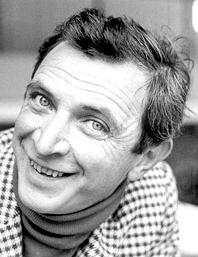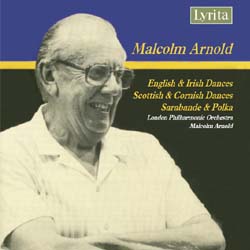Notes
- ↑ Burton-Page, Piers (2001) Notes to EMI CD 5 74780 2
- ↑ "Dancer inspired others to excel". NZ Herald. Retrieved 2021-08-19.
- ↑ "Solitaire (1956)", Royal Opera House Collections Online, retrieved 8 October 2014
Solitaire is a one-act ballet created by Kenneth MacMillan in 1956 for the Sadler's Wells Theatre Ballet (later the Royal Ballet), London. The music is by Malcolm Arnold: his two sets of English Dances, with two new dances specially composed by Arnold, a sarabande and a polka. [1] The polka was created for New Zealand dancer Sara Neil. [2]
The first performance was at Sadler's Wells Theatre, London on 7 June 1956. The principal character, called The Girl, was danced by Margaret Hill. [3]

Sir Robert Murray Helpmann was an Australian ballet dancer, actor, director, and choreographer. After early work in Australia he moved to Britain in 1932, where he joined the Vic-Wells Ballet under its creator, Ninette de Valois. He became one of the company's leading men, partnering Alicia Markova and later Margot Fonteyn. When Frederick Ashton, the company's chief choreographer, was called up for military service in the Second World War, Helpmann took over from him while continuing as a principal dancer.

Sadler's Wells Theatre is a London performing arts venue, located in Rosebery Avenue, Islington. The present-day theatre is the sixth on the site. Sadler's Wells grew out of a late 17th-century pleasure garden and was opened as a theatre building in the 1680s.

Birmingham Royal Ballet (BRB) is one of the five major ballet companies of the United Kingdom, alongside The Royal Ballet, the English National Ballet, Northern Ballet and Scottish Ballet. Founded as the Sadler's Wells Theatre Ballet, the company was established in 1946 as a sister company to the earlier Sadler's Wells company, which moved to the Royal Opera House that same year, subsequently becoming known as The Royal Ballet.

Dame Margaret Evelyn de Arias DBE, known by the stage name Margot Fonteyn, was an English ballerina. She spent her entire career as a dancer with the Royal Ballet, eventually being appointed prima ballerina assoluta of the company by Queen Elizabeth II.

The Royal Ballet is a British internationally renowned classical ballet company, based at the Royal Opera House in Covent Garden, London, England. The largest of the five major ballet companies in Great Britain, the Royal Ballet was founded in 1931 by Dame Ninette de Valois. It became the resident ballet company of the Royal Opera House in 1946, and has purpose-built facilities within these premises. It was granted a royal charter in 1956, becoming recognised as Britain's flagship ballet company.

The Royal Ballet School is a British school of classical ballet training founded in 1926 by the Anglo-Irish ballerina and choreographer Ninette de Valois. The school's aim is to train and educate outstanding classical ballet dancers, especially for the Royal Ballet and the Birmingham Royal Ballet.

John Cyril Cranko was a South African ballet dancer and choreographer with the Royal Ballet and the Stuttgart Ballet.

English Dances, Op. 27 and 33, are two sets of light music pieces, composed for orchestra by Malcolm Arnold in 1950 and 1951. Each set consists of four dances inspired by, although not based upon, country folk tunes and dances. Each movement is denoted by the tempo marking, as the individual movements are untitled.

Sir Kenneth MacMillan was a British ballet dancer and choreographer who was artistic director of the Royal Ballet in London between 1970 and 1977, and its principal choreographer from 1977 until his death. Earlier he had served as director of ballet for the Deutsche Oper in Berlin. He was also associate director of the American Ballet Theatre from 1984 to 1989, and artistic associate of the Houston Ballet from 1989 to 1992.
Nadia Nerina was a South African dancer who was "one of the most gifted, versatile, and inspiring ballerinas of The Royal Ballet" during the 1950s and 1960s. She was known "for her technical virtuosity, lightness afoot, effortless-seeming jumps, and joyful charm onstage, especially in comedic roles."
Maryon Lane was a South African ballet dancer who became well known in Britain as a ballerina of the Sadler's Wells Theatre Ballet and as a soloist with the Royal Ballet.
Donald Gene Britton was a principal dancer with the two Royal Ballet companies, the Sadler's Wells Theatre Ballet and the Sadler's Wells Ballet from 1945 to 1965.
John Field was an English ballet dancer, choreographer, director and teacher. He was a renowned member of the Vic-Wells Ballet and Sadler's Wells Theatre Ballet and was also artistic director of the La Scala Theatre Ballet.
Alexander Marshall Grant was a New Zealand ballet dancer, teacher, and company director. After moving to London as a young man, he became known as "the Royal Ballet's most remarkable actor-dancer in its golden period from the 1940s to the 1960s."

Georgina Parkinson was an English ballet dancer and ballet mistress. She joined The Royal Ballet in 1957 and was promoted to principal dancer in 1962. Best known for dancing 20th-century works, she was a frequent collaborator of choreographer Kenneth MacMillan, and had also created roles for Frederick Ashton. In 1978, she accepted the invitation to become a ballet mistress at the American Ballet Theatre for a year, before assuming the position permanently in 1980. She also performed character roles with the American Ballet Theatre.
Desmond Doyle was a South African ballet dancer who performed in England in the 1950s and 1960s before becoming ballet master of The Royal Ballet.
Danses concertantes is the title of a work for chamber orchestra written in 1941–42 by Igor Stravinsky, commissioned by Werner Janssen. Stravinsky's music has been used for eponymous ballets by numerous choreographers attracted by its danceability.

Donald Whyte MacLeary is a retired British ballet dancer, a former principal dancer and a ballet master with the Royal Ballet, where he was a member of the company for 48 years.
Margaret Hill was a British ballerina, a principal dancer with the Royal Ballet.
Sara Neil was a New Zealand dancer, and was the first director of the New Zealand School of Dance.